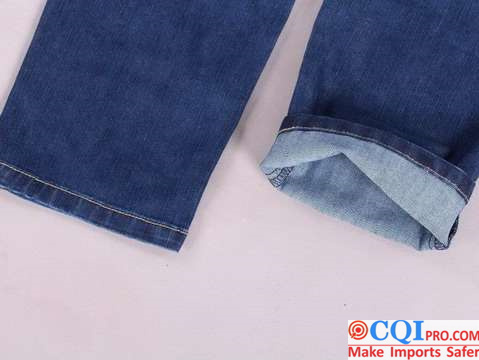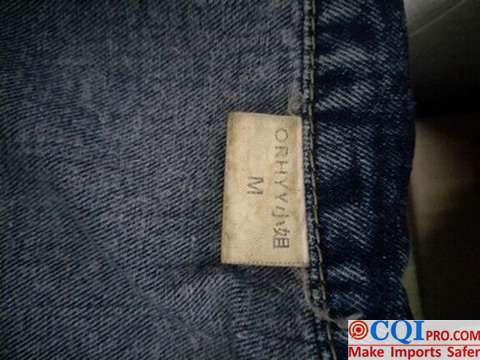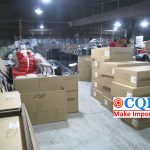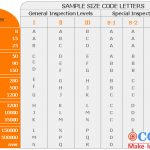Jeanswear Inspection,How To Quality Control
Jeans are popular in China from Europe and the United States. According to statistics, the denim produced in China reaches 2 billion meters each year, accounting for 25 % of the world, and the jeans produced in China are also more than 2.5 billion pieces each year. It can be said that China has become an important producer of jeans in the world, among which Changzhou in Jiangsu and Weifang in Shandong are the concentrated manufacturing regions for jeans,and more and more import and export trade is related to jeans. In addition, these jeans manufacturers are also constantly updating and developing more popular denim fabrics.What follows is that importers are paying more and more attention to jeanswear inspection because they want to seize the opportunity and grab the market chance with the help of CQI inspection.In the article of advantages of outsourcing inspection , the advantages of outsourcing inspections to third parties are detailed and reference is provided to importers.

Introduction of product composition and main structure
Jeanswear usually refer to ordinary or colored denim clothes made mainly of pure cotton and cotton fibers, blended or interwoven dyed denim as the main raw material. Generally, it consists of fabric, lining and accessories, including shoulder pads, pocket cloth, stitches, buttons, zippers and metal accessories.
The product core manufacturing process
Complete technological process: raw material selection – confirmation of size and color and various accessories – sewing – washing – quality inspection – primary ironing – secondary ironing – labeling – finishing and packaging
Among the important links are:
- Sewing process: The quality of the locking line and the sewing line is the easiest to see, and it is also the first step for the inspector in jeanswear inspection.
- Washing process: This is a special process in the production of jeans, which does not retain the original color of the fabric and gives the product a new texture and color after washing. In jeanswear inspection, inspectors need to check the color of the product to make sure it is consistent with the customer’s confirmation.
- Ironing process: before ironing, it is necessary to confirm the ironing tools used and the safe ironing methods in order to meet the customer’s requirements.

Common Defects and Causes in Jeanswear Inspection
Appearance class:
- The waist surface is uneven and wrinkled: the fabric is inferior or poorly ironed;
- Poor stitch, floating thread, obvious needle eye, continuous jumper, left-right asymmetry, etc: Improper sewing operation and inferior stitching;
- The color fading is serious and uneven, the hand feeling is obviously rough, and the pollution is variegated, etc. The water washing process is not properly operated and the water quality is polluted.
- Severe shrinkage deformation: no pre-shrinkage treatment was carried out;
- Poor quality, corrosion and copper stain of metal fittings: The fittings are of poor quality and have not been properly treated for rust prevention;
- Zipper bending, non – lubrication, lack of teeth, zipper head falling off, etc: wrong installation of zipper and poor quality of zipper;
- The trademark is skewed, the printing is not obvious, the logo is wrong, etc: bad sewing and bad printing.
Functional category:
- Dimensions are not allowed to deviate;
- No peculiar smell is allowed;
- All accessories can be used normally.

Jeanswear Inspection-Product testing
On – site testing of inspectors in jeanswear inspection
- Appearance neatness, no smudgy;
- Color and printing, check whether there is color difference in batch products, or check with the customer’s signature if there is one, so as to facilitate the customer to visually see the quality;
- Metal fittings are free from rust, safe and firm, and metal edges cannot have sharp points and edges, etc;
- The sewing quality must be good and every detail must be thoroughly checked in the jeanswear inspection;
- Abuse test: Repeat 20 times for sewing, jujube beating, zipper, button, hook and loop or chicken eye. No damage is found. Pay attention to the unilateral pulling force of zipper and check the sewing strength;
- Tests for color fastness: Check whether the dry rubbing and wet rubbing on the printing surface will fade and whether the product will fade;
- Check the number of needles: Measure the number of needles per inch with a ruler or tape and record it.
Laboratory testing
- Twist before washing, change rate of washing size, color fastness, abrasion resistance, breaking strength, tearing strength, etc. shall conform to FZ / T 81006 – 2007 of the national textile industry;
- Basic safety performance, including formaldehyde content and PH value, shall conform to FZ/T81006-2007 of the national textile industry.

CQI5 is committed to providing importers worldwide with product quality inspection services that far exceed those of our peers. If you are planning to import or have imported from China or Southeast Asian countries, please contact us cs’@’cqipro.com to learn more about how we can make your imports safer.
This article is an original article for CQI Inspection, who is committed to providing high-quality product inspection technology and know-how sharing for global importers and retailers to make imports safer.
All rights reserved. The contents of this website provided by CQI Inspection may not be reproduced or used without express permission.
For reprint, please contact with CQI Inspection, thank you.





